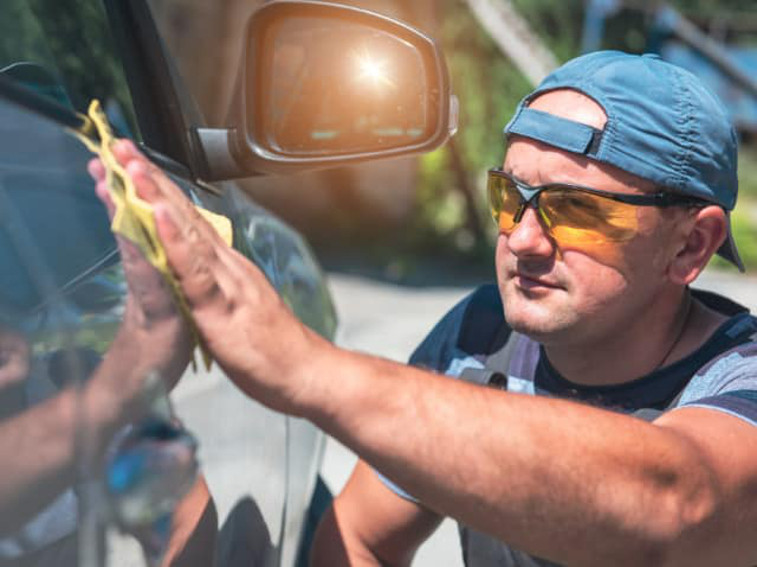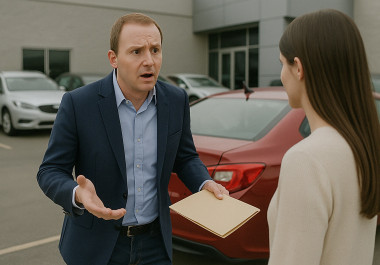Even if you’ve already started restoring the interior of your salvage car, it doesn’t take an expert to know that even the most impressive interior isn’t going to help you resell the car if it still looks awful on the inside. Now, the amount of work you need to do on your own used car will vary. It might just require paint, or it might require stripping right down to the bare metal; a top-to-bottom restoration. While we don’t go into quite that level of exhaustive detail in this post, we’ve summed up some of our best tips to help you get started.
It’s worth bearing in mind that this is just general advice for a standard auction car, and the suggested measures not necessarily be enough for a classic or specialist car. They might even be wholly unsuitable, so if you’ve got a rare model it’s a good idea to seek more specialist advice from an expert on the vehicle in question!
Before you get started
Ahead of doing any work on your auction car at all, it’s a good plan to start with a quick once-over of its condition, making note of anywhere it needs some particular care and attention. If it’s just a paintwork job, you might discover that it just requires a touch-up, which can save you a lot of time and energy. It also might alert you to any particular delicate or sensitive areas of the car, so you know where to be careful as you move ahead with the restoration.
If you’re planning on taking any parts off (even temporarily), it’s never a bad idea to take some photos in advance and make a note of which parts fit where. Just in case you get a few months or weeks down the line and need to reassemble the car, but can’t remember how it all fits together!
This is the point to be realistic with yourself about whether you might need help from someone else, and factor in the cost of their expertise (unless you’re lucky enough for them to be friends or family). It’s also a good time to take stock of your equipment, and think about whether you’ve got everything you need with you to get the job complete! Perhaps one of the most important tips we can give you here is to be careful of your cleaning products. They’re not one-size-fits-all. In fact, some can even end up damaging your car if they’re not being specifically used for the surface or material they’re designed for, so that’s something to bear in mind!
Restore your auction car step by step

Start with the paintwork and body of the car
For buyers, this is the most immediate and obvious indication of the general condition of the car, so it’s where you’ll want to start. You’ll already have a good idea of what sort of state it’s in from your initial assessment. If you’re just briefly going over it, make sure to use a car-specific washing liquid. A moderately powerful rinse is wise, because it’ll get rid of the dirt that might otherwise scratch your paint during the washing process.
On the other hand if your paint is very old, chipped or faded all over the body of the car it may well need a professional respray. Professional restorers tend to take off all body panels and methodically remove the paint either by using chemicals, or by sandblasting them. If you see that rust is a particular issue this might be the approach you’ll want to go with. In places where rust is affecting just one part of the panel, you may even have to cut away the rusted part and weld in some new sheet metal. Alternatively, you could simply replace the rust-affected piece with a new metal sheet. After that, all panels will require coating in a grey epoxy primer, before being repainted piece by piece so that they’re all an even, consistent colour.
If you’re taking panels off, it’s also a good time to look at replacing and restoring other external parts such as the door handles, mirrors and bumpers. While damaged fenders are often cheaper and easier to simply replace, if the damage is only surface-deep (such as fading, for example) you’ll sometimes find that you can restore bumpers to near-perfect condition with the use of plastic trim.

Moving on to the windows and wheels
When it comes to the windows, you’ll want to use a clean, microfibre towel. In fact, ideally you’ll want to use two - one for cleaning and one for drying. As we’ve already touched upon, use specialist cleaner if you can. You’ll usually want to avoid using common household cleaners, because these contain ammonia which can damage the window tint. You might not deem it to be such a problem if it’s a standard lightly damaged car, but for a rare or specialist vehicle you’ll definitely want to invest in a more suitable solution (if you’ll pardon the pun).
The same goes for wheels. If you know your wheel type, use the product that’s been specifically formulated for it, and assess the tyres to see whether they’re bald or need replacing. You might decide to give them a lift with some new air, or even replace the wheels entirely - either because they’re not fit for purpose or to just give a bit of an overhaul to your auction car’s whole look. Really, it probably comes down to whatever makes it look most attractive to the buyer!
Depending on the salvage car in question, you may find you need to do half of all that work, or all of it and more. It’s often a question of what you’re intending to do with the vehicle, and who you’re intending to sell it to. If you’re a dab hand at restoring the exteriors of salvage cars already, you’ll find lots to love in our used motor auctions. We’ve got a huge range of vehicles from leading manufacturers, including Mercedes, Peugeot and Audi - so take a look around, and see what catches your eye!




